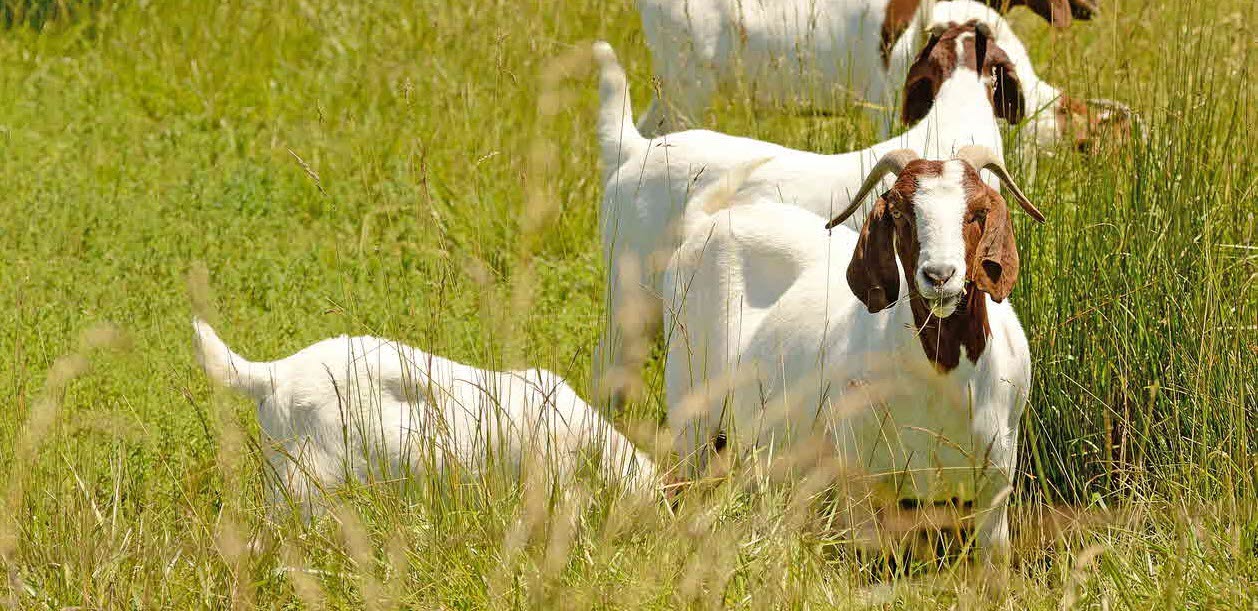Goat farming: the basics

The farming of goats is a relatively small industry in Australia compared to cattle and sheep, but has seen significant growth in recent years. As one of the first domesticated herd animals, goats have been used for their meat, fleece, hides and milk for more than two thousand years.
Goat meat has the advantage that there no cultural or religious taboos associated with it, and it has a low cholesterol content compared to beef or pork.
Goats are well suited to smaller rural holdings; as five to seven head of goats can be run in the same space as one head of cattle. Goats can also help to control woody weeds such as blackberries as they tend to preferentially graze the weeds. This can then help reduce the cost, labour and chemical environmental contamination associated with controlling pasture weeds. Goats also have the benefit of being able to be run on land that’s unsuitable for other production animals, such as steep rocky areas. They can also easily cross-graze with other livestock stock species.
Dairy production
Goat milk can provide an alternative for people who suffer with cow milk allergies and gastro-intestinal disorders. Commercial goat milk is mostly used in cheese, yoghurts as well as soaps. There are six main breeds of goats used in Australia for dairy farming. Three are of Swiss origin – Saanen, Toggenburg and British Alpine; two have been recently bred in Australia – Australian Melaan and Australian Brown and one is from the Middle East – the Anglo Nubian.
Meat production
Two of the main meat goat breeds in Australia are the Rangeland goats and Boer goats. Boer goats make an excellent meat breed as they are hardy and adaptable, have high fertility rates with multiple births being more common than singles and they gain weight quickly.
For producers interested in raising goats for meat, Meat & Livestock Australia (MLA) has Going into Goats: Profitable producers' best practice guide (GiG guide). The program is a delivery platform for outputs from research and development activities for farmed and rangeland goat production systems.
The GiG guide is an information package explaining the essential processes for a successful goat production system. According to the MLA, the guide draws on the knowledge, skills and experience of more than 40 goat producers from across Australia. It provides tools and information to help goat producers increase productivity while minimising risk.
Health
As with all animals for production, AVA recommends you source your livestock from reputable providers. New additions to the herd will need to be quarantined before they are introduced to the rest of the livestock on the property. Speak to your veterinarian about regular health checks and recommended vaccinations for goats. Goats are prone to worms and should be drenched when necessary, dosing and frequency of drenching should be discussed with your veterinarian to suit the needs of your herd. They also have an increased susceptibility to tetanus and goitre (caused by iodine deficiency) when compared to sheep.
